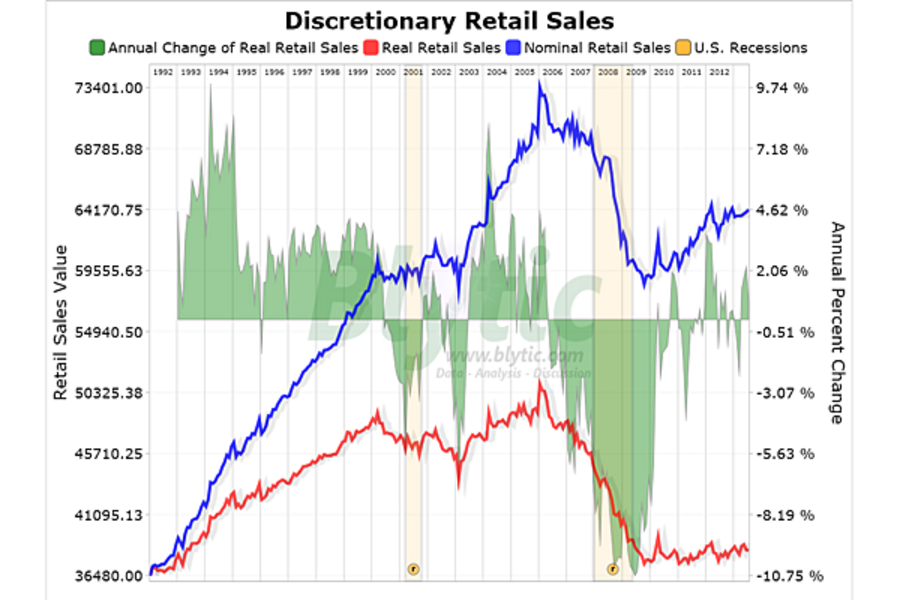Retail sales correlate with home prices
Loading...
Today, the U.S. Census Bureau released its latest nominal read of retail sales showing an increase of 0.2% from June, and a gain of 5.4% on a year-over-year basis on an aggregate of all items including food, fuel and healthcare services.
Nominal "discretionary" retail sales including home furnishings, home garden and building materials, consumer electronics and department store sales, on the other hand, declined 0.1% from June but still increased 2.61% above the level seen in July 2012 while, adjusting for inflation, “real” discretionary retail sales declined 0.1% on the month and increased 0.80% since July 2012.
On a “nominal” basis, there had appeared to be “rough correlation” between strong home value appreciation and strong retail spending preceding the housing bust and an even stronger correlation when home values started to decline.







